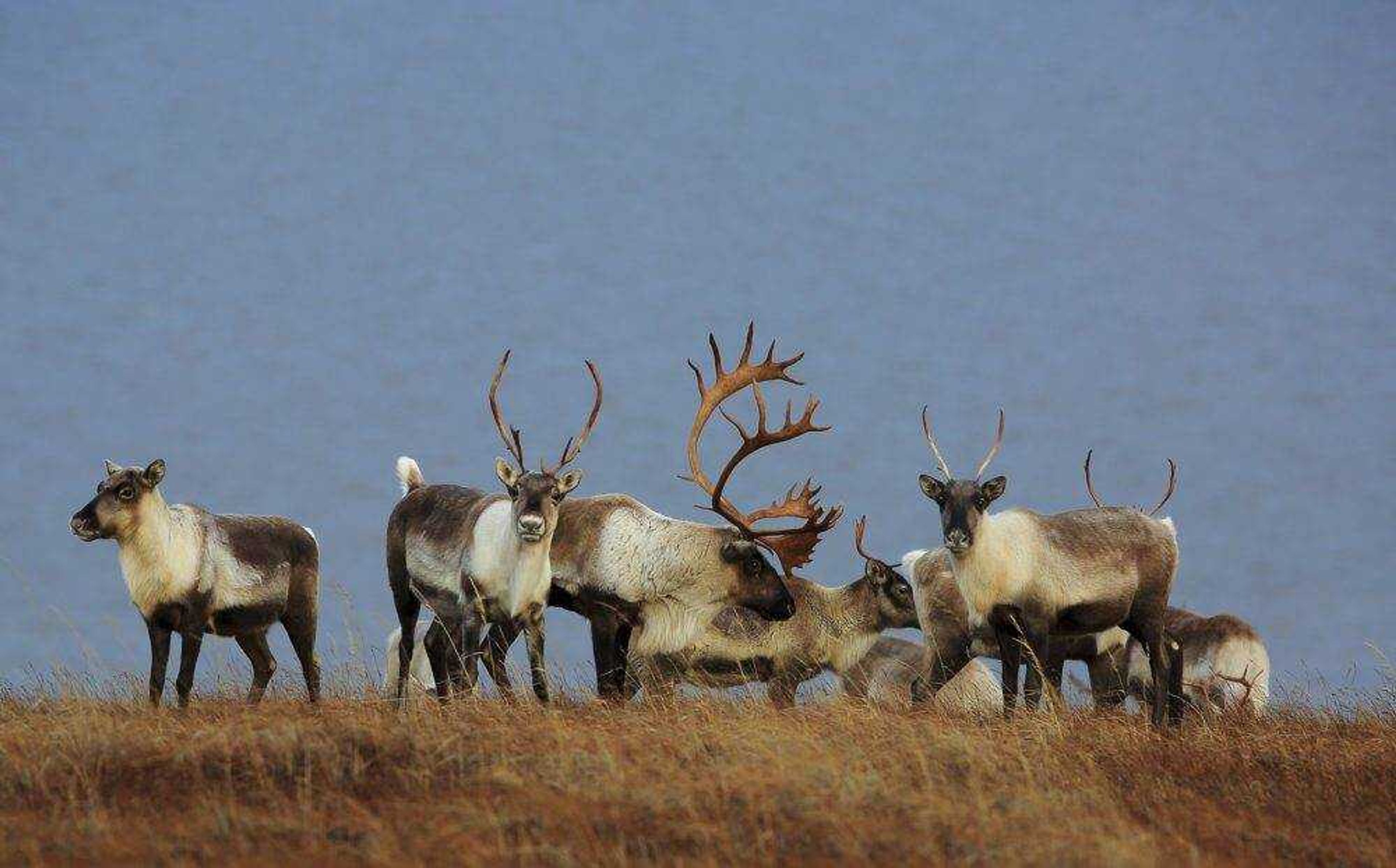Biologists research mystery of declining caribou herd in Alaska
JUNEAU, Alaska -- The size of a large caribou herd in Alaska's Arctic region has dropped by more than 50 percent over the last three years, and researchers are trying to determine why. The state's Central Arctic herd, which roams an area of north-central Alaska about the size of Ohio, hit a peak of about 70,000 caribou in 2010...
JUNEAU, Alaska -- The size of a large caribou herd in Alaska's Arctic region has dropped by more than 50 percent over the last three years, and researchers are trying to determine why.
The state's Central Arctic herd, which roams an area of north-central Alaska about the size of Ohio, hit a peak of about 70,000 caribou in 2010.
It fell to 50,000 in 2013. That year, spring arrived late, meaning caribou had to trudge through snow later than usual at a time when their bodies were already stressed and not getting the grasses they need for nutrition.
Surveys by the Alaska Department of Fish and Game suggest the herd dwindled to about 22,000 caribou this year.
There has been a higher than normal rate of death among adult female caribou tracked with radio collars, but the reason for that is unclear, said state wildlife biologist Beth Lenart.
The department does not believe hunting is a factor in the decline, saying caribou killed by hunters account for a small portion of overall deaths.
The department doesn't think predation by wolves and bears plays a large role in regulating Arctic caribou herds, and biologists so far have not detected diseases affecting the herd, Lenart said.
Pregnancy rates for female caribou are down slightly since 2013, but not alarmingly so, she said. Fewer adult males are tracked by tracking collars, making it more difficult to spot trends in their numbers.
Researchers conclude caribou likely have died when the sensors on their collars indicate the animals have not moved for at least 12 hours.
Lenart plans to review weather data more closely to see whether there might have been changes biologists hadn't picked up on, such as impacts to vegetation that could affect caribou nutrition.
"But other than that, it's pretty challenging" pinpointing a cause, she said.
The caribou's diet includes mushrooms, lichen, willow leaves, small shrubs and grasslike plants called sedges.
Some of the Central Arctic herd caribou may have joined other herds, though the extent to which that may have happened is unclear, Lenart said.
The herd's territory covers 44,400 square miles from the Arctic coast to the Prudhoe Bay oil fields to the southern side of the Brooks Range of mountains.
It's not unusual for there to be rises and falls in the numbers of caribou in herds, but Lenart described the change for the Central Arctic herd as "definitely a steep decline."
While there's no evidence climate change is affecting the herd, the Arctic is seeing the effects of a warming climate, with polar bears serving as a poster child of sorts for the change.
Connect with the Southeast Missourian Newsroom:
For corrections to this story or other insights for the editor, click here. To submit a letter to the editor, click here. To learn about the Southeast Missourian’s AI Policy, click here.








